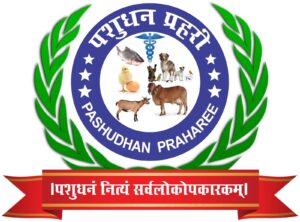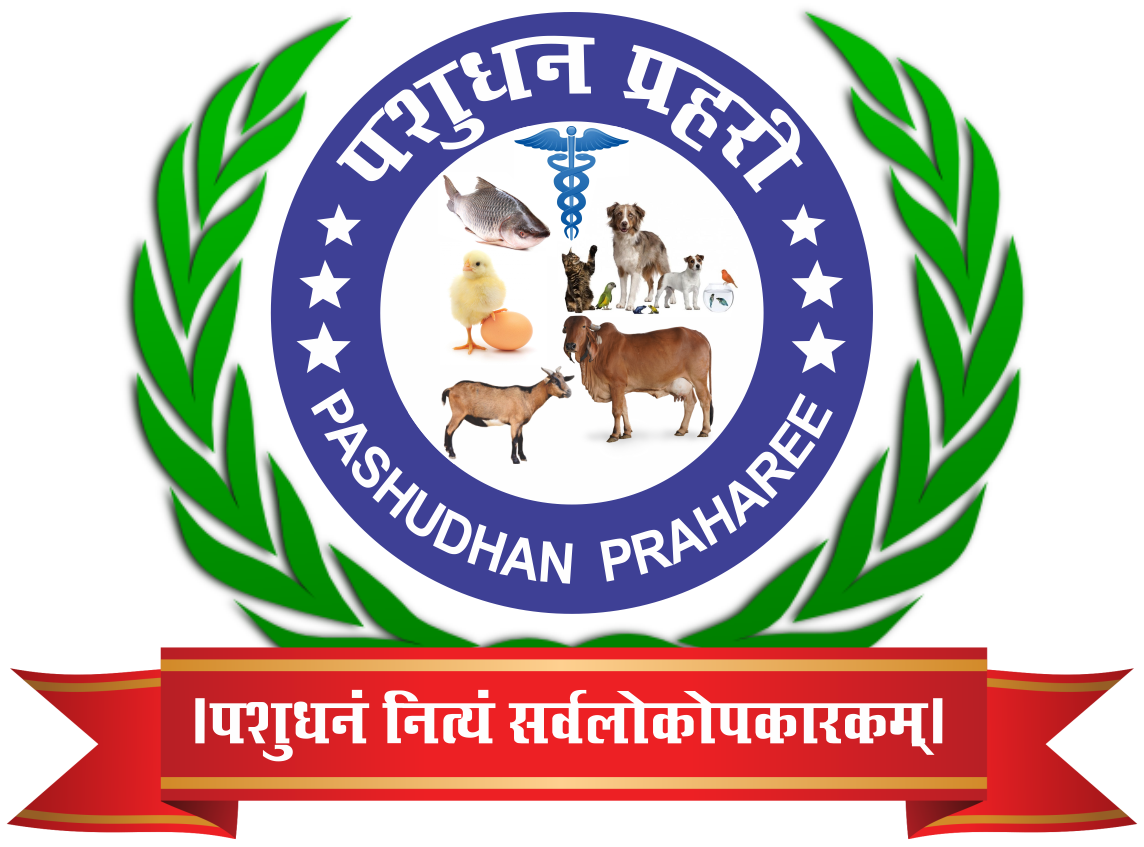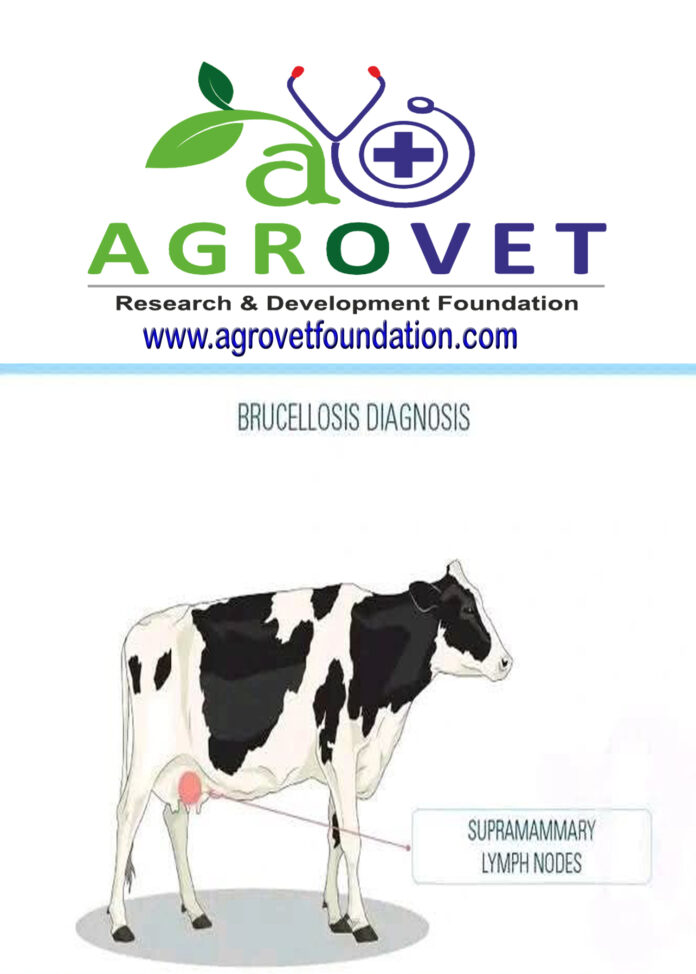Detecting Bovine Brucellosis in the Field: A Practical Guide for Indian Dairy Farmers
Brucellosis is a highly contagious bacterial disease caused by Brucella species, primarily affecting cattle, buffaloes, sheep, goats, and humans. It is one of the most significant zoonotic diseases that can spread from animals to humans, leading to severe health and economic consequences.
In India, brucellosis is a major concern in the dairy sector due to its impact on livestock productivity, reproductive health, and milk yield. The disease also poses a serious public health risk, especially to farmers, veterinarians, and dairy workers. Controlling and mitigating brucellosis in dairy cattle is essential to improve animal health, enhance dairy productivity, and ensure food safety.
- Causes & Transmission of Brucellosis
(A) Causative Agent
- Brucellosis in dairy cattle is mainly caused by Brucella abortus.
- Other species include Brucella melitensis (affects goats and sheep) and Brucella suis (affects pigs).
(B) Mode of Transmission in Dairy Cattle
- Direct Contact with Infected Animals
- Brucella bacteria are shed in milk, aborted fetuses, fetal membranes, and uterine discharges of infected cows.
- Healthy cattle contract the disease through licking infected materials or coming into contact with contaminated surfaces.
- Ingestion of Contaminated Feed & Water
- Brucella bacteria can survive in feed, water, and manure for long periods, leading to oral ingestion.
- Inhalation of Aerosolized Bacteria
- Farmers and dairy workers handling infected animals, placenta, or aborted materials are at risk of contracting brucellosis through airborne transmission.
- Venereal Transmission
- Infected bulls can transmit Brucella through natural mating or artificial insemination.
- Congenital Infection
- Calves born to infected mothers may acquire brucellosis congenitally or through ingestion of infected colostrum.
- Symptoms of Brucellosis in Dairy Cattle
(A) Clinical Signs in Cows & Buffaloes
- Reproductive Disorders
- Abortions (usually in the last trimester).
- Retained placenta leading to metritis.
- Stillbirths & weak calves.
- Infertility and repeat breeding.
- Milk Production Issues
- Sudden drop in milk yield (milk from infected cows may contain Brucella bacteria).
- Systemic Signs
- Mild fever, lethargy, and loss of appetite.
- Enlarged lymph nodes and swelling in joints (arthritis in chronic cases).
(B) Clinical Signs in Bulls
- Orchitis (swelling of testicles).
- Reduced fertility and poor semen quality.
- Zoonotic Threat of Brucellosis in India
(A) Public Health Concerns
Brucellosis is a major occupational hazard for:
- Farmers, dairy workers, veterinarians, and slaughterhouse workers.
- People consuming raw, unpasteurized milk and dairy products.
(B) Symptoms of Brucellosis in Humans
- Flu-like symptoms:
- Fever, chills, fatigue, and body aches.
- Joint pain & arthritis:
- Chronic cases may develop Brucellar arthritis.
- Neurological complications:
- Severe cases may affect the nervous system, leading to headaches and mental confusion.
- Reproductive complications:
- Infected pregnant women may suffer from miscarriages and premature births.
(C) AMR (Antimicrobial Resistance) Risk
- Indiscriminate use of antibiotics for brucellosis can lead to antimicrobial resistance (AMR).
- AMR is a serious One Health concern, requiring judicious antibiotic use and preventive measures.
- Diagnosis of Brucellosis in Dairy Cattle
(A) Field-Level Diagnosis
- History of abortions & reproductive issues in the herd.
- Milk Ring Test (MRT): Detects antibodies in bulk milk samples.
(B) Laboratory Tests
- Serological Tests
- Rose Bengal Plate Test (RBPT): Quick screening test for Brucella antibodies.
- Standard Tube Agglutination Test (STAT): Confirms brucellosis.
- Culture & PCR Testing
- Isolation of Brucella bacteria from blood, milk, or fetal membranes.
- PCR (Polymerase Chain Reaction) provides highly accurate diagnosis.
How to Diagnose Bovine Brucellosis at the Field Level in India
Field-level diagnosis is crucial for immediate identification and control of bovine brucellosis. It involves clinical observation, rapid tests, and herd history assessment.
(A) Clinical Signs & Symptoms in Cattle
Farmers and veterinarians should observe the following common symptoms of brucellosis in dairy cattle:
- Reproductive Signs
- Late-term abortions (7-9 months of pregnancy).
- Retained placenta and metritis (uterine infection).
- Stillbirths or weak newborn calves.
- Repeat breeding and infertility in cows.
- Udder & Milk Production Issues
- Decreased milk yield.
- Presence of Brucella bacteria in milk (can be transmitted to humans through raw milk).
- Signs in Bulls
- Orchitis (swollen testicles).
- Poor semen quality, leading to infertility.
- General Symptoms
- Lethargy, weight loss, and mild fever.
- Joint pain, arthritis, and swollen lymph nodes.
(B) Field-Level Diagnostic Tests for Brucellosis
Veterinarians and para-veterinarians can use rapid and cost-effective field tests for early detection of brucellosis:
- Milk Ring Test (MRT) – Quick Field Test for Dairy Farms
- Used for screening milk samples from suspected cows.
- A positive test shows a blue-colored ring in the milk sample.
- Application: Best for testing lactating cows in dairy farms.
- Rose Bengal Plate Test (RBPT) – Simple Blood Test for Brucellosis
- Widely used field test to detect Brucella antibodies in blood samples.
- A clumping reaction (agglutination) on the plate indicates a positive case.
- Application: Suitable for mass screening of cattle at the field level.
- ELISA Test – Advanced Laboratory Test
- Conducted in state veterinary laboratories for confirmation of brucellosis.
- Used under the National Brucellosis Control Program (NBCP).
(C) Identifying Infected Herds Through Herd History
Veterinarians should ask farmers about:
- Any recent abortion cases in the herd?
- Incidents of stillbirths or weak calves?
- Any cows showing repeat breeding problems?
- Reduced milk production without other visible infections?
If multiple cows in a herd show such signs, brucellosis should be suspected, and further testing should be done.
- Mitigation & Control Strategies in the Indian Context
(A) Vaccination Strategy
- Brucella S19 Vaccine
- Administered to female calves (3-8 months of age).
- Provides lifelong immunity but can cause temporary infertility in adult cattle.
- Brucella RB51 Vaccine
- Safer than S19; can be used in adult cattle.
- Annual Vaccination Drives
- Conducted under the National Animal Disease Control Programme (NADCP).
(B) Biosecurity & Farm Management
- Isolation & Culling of Infected Animals
- Infected cows should be separated to prevent disease spread.
- Infected bulls must be removed from breeding programs.
- Strict Hygiene Measures
- Proper disposal of aborted fetuses & placenta (deep burial or incineration).
- Disinfection of cattle sheds & equipment using phenol, formalin, or iodine-based disinfectants.
- Personal Protective Equipment (PPE) for Farmers
- Wearing gloves, masks, and protective clothing while handling cattle.
- Avoiding direct contact with blood, placenta, and reproductive discharges.
(C) Safe Milk Consumption & Pasteurization
- Boiling or pasteurizing milk before consumption to eliminate Brucella bacteria.
- Discouraging raw milk consumption to prevent zoonotic transmission.
(D) Community Awareness & Farmer Education
- Organizing veterinary camps for disease detection & vaccination.
- Training farmers on biosecurity, zoonotic risk, and farm hygiene.
General Awareness Tips for Livestock Farmers
(A) Preventive Measures to Control Brucellosis
- Vaccination of Female Calves
- Brucella S19 vaccine should be given to female calves aged 3-8 months.
- Vaccination prevents brucellosis in adult cows and controls the spread of the disease.
- This vaccine is available under NADCP (National Animal Disease Control Programme).
- Isolation & Culling of Infected Animals
- Separate infected cows immediately to prevent disease spread.
- Infected bulls should not be used for breeding.
- Hygiene & Biosecurity Practices
- Proper disposal of aborted fetuses, placentas, and stillborn calves by deep burial or incineration.
- Regular disinfection of cattle sheds, feeding troughs, and farm equipment using iodine or phenol-based disinfectants.
- Farmers should avoid handling infected materials with bare hands.
- Safe Artificial Insemination (AI) Practices
- Use disease-free semen from certified AI centers to prevent the spread of brucellosis through infected bulls.
(B) Protecting Farmers & Dairy Workers from Brucellosis
- Avoid Drinking Raw Milk
- Always boil or pasteurize milk before consumption.
- Drinking raw, unpasteurized milk from infected cows can transmit brucellosis to humans.
- Use Personal Protective Equipment (PPE)
- Farmers should wear gloves and masks while handling infected animals or cleaning sheds.
- Avoid direct contact with aborted materials, fetal fluids, and reproductive discharges.
- Immediate Medical Attention for Suspected Human Cases
- If farmers experience fever, joint pain, or prolonged weakness, they should immediately consult a doctor.
- Brucellosis in humans is treated with specific antibiotics (Doxycycline & Rifampicin) under medical supervision.
- Government Initiatives & Policies in India
(A) National Animal Disease Control Programme (NADCP)
- Launched in 2019 to eradicate Brucellosis & Foot and Mouth Disease (FMD).
- 100% vaccination coverage of cattle and buffaloes.
(B) Brucellosis Control Program under Livestock Health & Disease Control (LH&DC)
- Free serological screening & vaccination at veterinary hospitals.
(C) One Health Approach
- Coordination between animal, human, and environmental health sectors to reduce zoonotic disease transmission.
Brucellosis is a major reproductive disease in dairy cattle with severe economic and zoonotic implications. In India, effective vaccination, biosecurity measures, and farmer awareness are essential to control the spread of brucellosis.
A collaborative One Health approach involving veterinarians, public health officials, and dairy farmers is crucial to mitigate brucellosis and ensure safe dairy production. With government support and farmer participation, India can move towards brucellosis-free dairy farming, improving livestock health and rural livelihoods.



